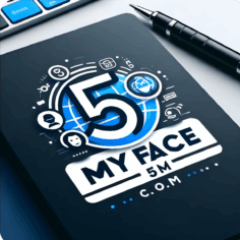The Rise of YouTube: From Startup to Global Phenomenon
YouTube launched in early 2005, it quickly transformed how people shared video online. In fact, within just four months, the platform attracted over 4 million visitors. That same year, Time Magazine awarded YouTube the title of “Best Invention of the Year.”
Before YouTube, there was no simple, user-friendly way for everyday people to upload, share, and watch videos. YouTube changed everything by making video accessible to the world.
Google Acquisition
Recognizing its massive potential, Google acquired YouTube in October 2006 for $1.65 billion. This move solidified YouTube’s place in internet history and laid the groundwork for it to become one of the most-visited websites in the world.
Growth of the Platform
Every single day, tens of thousands of new videos were being uploaded in YouTube’s early years — a trend that only accelerated over time. Today, the platform supports countless formats and is accessible on virtually every device, from smartphones to smart TVs.
Why It Mattered
YouTube’s biggest innovation wasn’t just video sharing. It was the way it:
Democratized publishing — anyone with a camera could create content.
Opened the door for creators, educators, and businesses to reach global audiences.
Introduced a social layer, allowing likes, comments, and subscriptions.
This shift changed not only media consumption but also marketing, entertainment, and culture itself.
Lessons for Marketers
Even today, YouTube shows us the power of:
Meeting people where they are (mobile + desktop accessibility).
Keeping platforms open and easy-to-use.
Leveraging community engagement to drive growth.
How to Legally Download, Edit, and Use Public Domain Videos for YouTube Content
Creating content for YouTube doesn’t always mean starting from scratch. In fact, there are thousands of public domain and royalty-free videos available online that you can legally download, edit, and repurpose into engaging content. If done right, this can save time, boost creativity, and even help you grow your channel.
Here’s a step-by-step guide.
1. Understand the Legal Basics
Not all free videos are safe to use. Let’s break it down:
Public Domain Videos
These are videos whose creators have waived copyright protection or whose copyrights have expired. They can be used freely for personal and commercial purposes.Royalty-Free Videos
These are free to use under specific licenses. You can use them for commercial purposes, but you may need to edit them (not just re-upload as is). Attribution may be optional depending on the license.
⚠️ Avoid downloading and re-uploading TikTok, YouTube, or other social media videos without permission. Those are copyrighted and can lead to strikes or lawsuits.
2. Where to Find Public Domain & Royalty-Free Videos
Here are safe and trusted sources:
Pexels (pexels.com/videos)
Thousands of free stock videos for personal and commercial use. No attribution required.Pixabay (pixabay.com/videos)
Owned by Canva, offers a huge library of royalty-free videos you can import directly into Canva projects.NASA (nasa.gov/multimedia)
Government footage in the public domain (earth, space, science, launches).Pond5 Public Domain Project (pond5.com/free)
Curated and remastered public domain footage.
These libraries give you legal material to work with—and many creators have built entire channels using just these sources.
3. How to Download Videos
On Pexels or Pixabay:
Use the search bar → choose your video → select resolution (HD recommended) → click Download.On NASA or government sites:
Navigate to their video archives → find a clip → download directly.On Pond5:
Visit their Public Domain Project → select videos → download free.
💡 Pro tip: Always download the highest quality available for professional results.
4. How to Edit Videos
Editing is what makes free content unique to your brand. Try:
Combining multiple clips into one sequence.
Adding text overlays (quotes, facts, or your commentary).
Adding background music (use royalty-free music from YouTube’s Audio Library).
Adding your voiceover to give context, storytelling, or reactions.
✅ Tools like Canva, CapCut, or Adobe Premiere Rush make editing simple—even for beginners.
5. How to Use Them on YouTube
Repackage Content Creatively
Don’t just re-upload clips as they are. Add value through narration, editing, or context.Stay Within Guidelines
YouTube’s monetization policy requires original or transformative use. This means you must change the content enough to make it your own.Examples of Successful Use
SpaceShorts repurposed NASA clips into short edits and gained millions of views.
Ray’s Astrophotography used Hubble Telescope footage to make educational and viral content.
6. Bonus Tips for MyFace5 Creators Video Piggy Review
Batch Download & Edit: Save time by planning a week’s worth of content in one sitting.
Create a Series: Group related public domain clips (e.g., “Top 5 NASA Missions” or “Historic Space Moments”).
Add Branding: Insert your logo or watermark to protect your edited content.
Give Back: If possible, support creators who upload royalty-free videos with donations or shoutouts.
Video Piggy Review – How To Download YouTube Videos And Transform Them
Using public domain and royalty-free videos is a smart way to build a YouTube channel legally and creatively. With sources like Pexels, Pixabay, and NASA, plus simple editing tools like Canva, you can create engaging videos that attract views and revenue—without worrying about copyright strikes.
Start small, stay consistent, and remember: your creativity is what makes free content valuable.
Global brands 🌍
Small businesses 📈
Startups 🚀
We don’t just manage social media — we build strategies that deliver results.
👉 Visit www.myface5.com to learn more.



